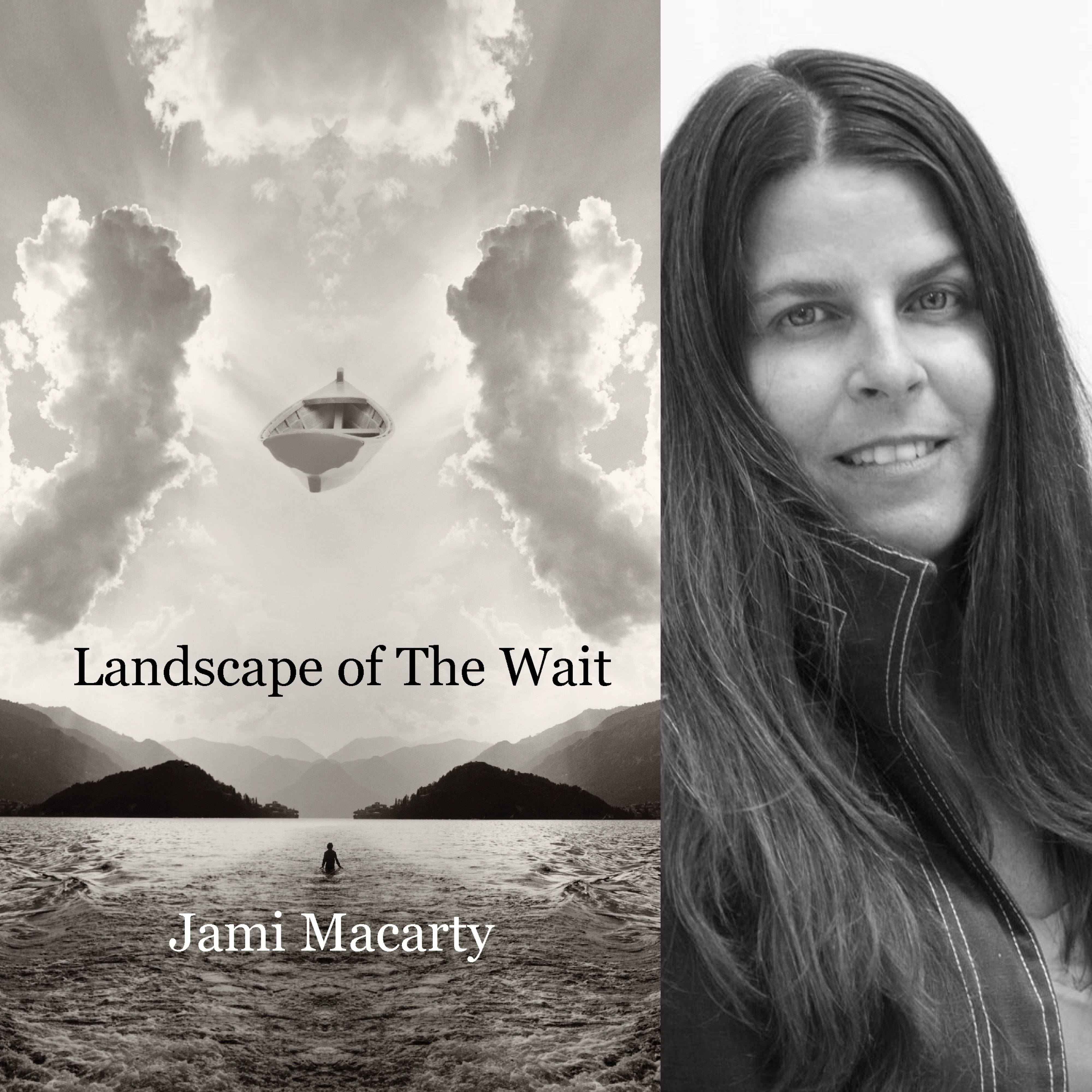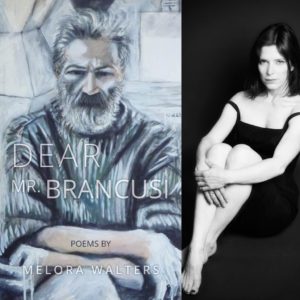How to write of emergency. Of trauma. Of a boy in a coma surrounded by those who care. Who care to find him. Jami Macarty, the poet among them, writes her way toward him with a scorching, visceral language. Her poems try to make contact from every direction and so the poems are heterogeneous, their myriad structures probing. The unsettled grammatical connections, the caesuras rehearsing loss, the vowels howling in rhyme from either side of the gap, the skips in the language— into into into— enact all the energies of living in that extended moment of suspension when we simply don’t know what happens next.
–Forrest Gander, author of Core Samples from the World & The Trace
In this “landscape,” the experience of waiting ceases to be mere concept, ceases to even be merely a topographic condition to be observed. Landscape of The Wait inevitably, inexorably, becomes a mirror, and the reader will see herself mirrored in it. But it does more. We are offered the landscape of crisis as a mirror of not only our own human condition, but of the ways that our normative human conditioning will be torn through by radical and irreversible change. There is, perhaps, a kind of freedom in that terror, though one that none of us would willingly choose. This is the kind of hard-won awareness, the kind of subtlety and complexity, that these poems achieve. Though the poems navigate a crisis specific to the speaker, which is exactingly portrayed, the reader can find in this text insights into some of the largest questions we ask of life, and of death. Each poem uses its form as a unique figure of inquiry—sometimes precociously, sometimes with a profoundly moving sadness. What is found in this poet’s deft delving into the unknowable is never a completion, never a finish, but rather a map for furthering the investigation. These are beautiful, brilliant poems exposing us to the fullness of a fierce and compassionate, never complacent, intelligence.
–Rusty Morrison, author of After Urgency & Beyond the Chainlink
From the trauma of ruin, Jami Macarty tries to make sense. The more delicate and beautiful these lyrics are the keener we feel the double-edged blessing and wound of living in a human form. The quiet vigil beside the body of the comatose nephew finds its analogy in the writer and reader desperately attending the language of the poem in deep hope of finding some comfort there.
–Kazim Ali, author of Bright Felon & Sky War
Review at Panoply -- https://panoplyzine.com/






Eileen (verified owner) –
Ms. Macarty’s chapbook is breathtaking in its eloquence. The poetry is a piece of art that must be viewed again and again.
Virginia Chase Sutton (verified owner) –
In Jami Macarty’s collection Landscape of The Wait, her poems create a landscape of dread even as they inform. Early on we know heartbreak is ahead. In “Fracture” the speaker says “where the fractured / glimpse /
the eternal.” The tender, questioning final poem asks “if only” showing the shadows and every day moments that bring us to the heartbreaking last line “if no one deserves this, certainly not you.” From the wreckage—the body, the lost moments, the truck—Macarty artfully attempts to make sense of chance—something impossible to do. This is a harrowing collection and I recommend it heartily.
Jane Attanucci (verified owner) –
In Landscape of The Wait, Jami Macarty gives language and form to the interminable space between a traumatic accident and what happens next. She helps us, as her readers, stay in the wait, recreating the longing, the not knowing, the insistent cycles of darkness and light. As with the best poetry, the particulars of her nephew’s car accident and coma, rendered so skillfully, become universal. She makes her query as familiar as our own, through dreams, flights, accident reports, hospital vocabulary and phone calls. These deeply felt and achingly beautiful poems call out: row sweet William/ row back to us/ outwater the water. Macarty outwaters the water.
Jane Attanucci, author of First Mud, Finishing Line Press, 2015
Review at Panoply –
https://panoplyzine.com/
Joe Ezzo –
A collection of poems to read again and again, to be savored, to stand in awe of. Imagine someone who can wield a scalpel and a cleaver in the same hand at the same time with equally expert dexterity — Jami Macarty is the poetic equivalent. Visceral, incandescent verse explodes from these pages to convey the helplessness of the wait as a loved one lies unaware at the door of death. Her ability to juxtapose the physical proximity of her comatose nephew with the incalculable distance of his mind haunts, captivates, enlightens the reader.
Don Gray –
Breathtaking! Deeply felt and economically written–every line feels parsed to absolute necessity. There’s a terse urgency in these poems that speaks to deeply felt experience. All who have waited in vigil over a loved one know in their heart what Macarty is saying. The last poem, “If Only What If” is a mantra for the vagaries and apparent randomness in all our lives. A marvelous accomplishment
Natasha –
This is beautiful, riveting, heart-felt writing. I felt transported into the author’s grief and resolution as she worked through heartbreak. It will be some time until I feel ready to read Macarty’s volume again, but it will be there and worth the wait.
Elizabeth –
I opened and could not stop reading until the end. Its amazing!
Cristina Trapani-Scott (verified owner) –
Jami Macarty is a cartographer in the most poignant and beautiful way. She charts territory that no one would willingly map, but she does it with grace and beauty and a precision of image such that we can’t help but be drawn into the landscape with her.
Lauren (verified owner) –
I too read all in one sitting Jami Macarty’s moving Landscape of The Wait. The variety of these poems, which springs organically from the many-faceted nature of having lived through/with the tragedy the book relates, is impressive. Among my favorite pieces are “Winter Field,” “Dear William,” and the sequence of dreams in prose poetry. The harrowing and the redemptive strains of the collection intertwine, neither winning out, moving together as a single music.
Eleanor Kedney –
What I admire about Jami Macarty’s book Landscape of The Wait is how the poems, though very personal, create room for the reader to grieve. The line “is he leaning into healing or receding” is where we wonder, alongside the speaker, whether William will come out of the coma and live. We want our loved ones to return to us, and we, too, implore him to “row sweet William/row back to us/outwater the water.” The grief and tragedy is immeasurable, yet Jami measures it and translates it for us. In “Dear World,” Jami juxtaposes very specific facts and the circumstance of an Uncle’s death and the variables of William’s accident. With the heart-breaking line “so that’s how this is going to go,” we understand how little control we have except to wait. The waiting is full of inquiry and hope. This book is a treasure, a guide that helps us across a landscape where, out of great love, the living let go of the dying.
Martin St-André (verified owner) –
Jami Macarty wrote this collection of poetry in honor of her nephew William who was hospitalized in an Intensive Care Unit after sustaining multiple physical and neurological injuries following a car crash. Her series of poems conjure up the harrowing experience of accompanying a loved one during a coma episode: the inability to validate any form of communication with the person, the enforced passivity, the entrapment in a highly technological environment, the dependency on a dazzling number of healthcare professionals, the repetitive attempts to create a coherent trauma narrative, the exhaustion, the resurfacing of family tensions – and solidarity – in the midst of forced hospital cohabitation, the sense of time unfolding and yet somewhat stagnating.
That great beauty could emerge from such an apparently bleak landscape speaks of Macarty’s literary brio, exquisite observational skills, deep capacity to straddle ambiguity and appreciation of life as it is. The superb visual layout of words on the page creates intriguing associations and conveys the sensory choppiness of traumatic experience. The percussive alliterations, the reiterations and the stuttering quality of certain passages convey the attempts to transmute disparate sensations into words. The repeated references to scientific terminology illustrate our striving to overcome ignorance and to conquer reality; yet this very quest acutely shows how language is but an island in the midst of the unknowable.
This series of poems should join the expanding literature in narrative medicine and be a recommended reading for anyone involved in critical care medicine. For family members and friends of patients, this text could provide hope about creating meaning in traumatic circumstances. For writers, this series will demonstrate how technical breadth can be used graciously and purposefully. And for the rest of us readers, this series will have us marvel at the power of poetry for expressing the inexpressible.